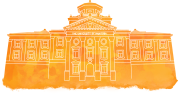Enrolment numbers have once again increased at the University of Manitoba.
A total of 27,540 students are currently enrolled for the 2010-11 academic year, an increase of one per cent compared to 27,262 students in fall 2009, according to a report released by the university
Kitty Leong, a member of the provincial Council on Post-Secondary Education (COPSE) said that the initial numbers should be used to get an estimate on enrolment numbers, but they are not yet concrete.
“They may change in November after the voluntary withdrawal date,” she said.
“Nevertheless, an increase in the number of registered students is good news for any university,” said Leong.
If enrolment numbers had dropped or remained flat, the university could suffer financially.
“The enrolment increase is about in line with what had been projected as the budget was being prepared,” said John Danakas, spokesperson for the U of M.
Undergraduate enrolment at the U of M has increased across the board, with both the faculty of arts and faculty of science seeing the largest increases. International enrolment has increased by 5.8 per cent with international students currently comprising about 8.2 per cent of the total student body. Overall, credit hours in the fall 2010 term have increased 0.8 percent from 277,782 hours to 280,099.
According to Danakas, increased enrolment is thanks to a number of factors.
“There has been a lot of effort from the recruitment office to attract students to the U of M. The demographic situation as well as the economy are favorable to increased enrolment,” he explained.
The University of Winnipeg is also seeing modest increases this year. Their preliminary numbers show a 2.7 per cent increase in students, according to Neil Besner, associate vice-president (research and international) at the U of W.
However, Besner noted that although there are more students, they are taking fewer courses overall.
“We’re pleased that more students are attending but we would like to know what we can do to help students. We have work to do on retention and so on,” he said.
There are a number of new developments on campus that Besner speculated have probably contributed to the increased enrolment. The university has a new science building slated to open in March 2010 and to begin full operation in September 2011, as well as a new residence just behind it. In addition, they have recently opened their new faculty of business and economics.
“Its enrolments are climbing steadily. It is in very good shape,” said Besner.
However, Besner also said that the university can’t assume that enrolment is going to increase consistently each year or rely on tuition fees for funding.
“We have to serve students. It’s not just a question about getting them in,” he said.
Preliminary first-day enrollment figures show a 1.2 per cent increase in enrolment at universities in Manitoba this year, putting the projected total at about 41,196 students.
University of Manitoba students represent about 50 per cent of this number.
Naline Rampersad, press secretary to the minister of advanced education and literacy, Diane McGifford, said there are a few probable reasons as to why more people are entering Manitoba universities.
“Manitoba’s tuition fees remain far below those in neighbouring provinces and well below the Canadian average,” said Rampersad.
According to Statistics Canada, Manitoba has the third lowest tuition fees in the country.
“Our 10 per cent tuition cut and freeze kept Manitoba’s tuition below 1999 levels for nine consecutive years,” she continued.
“University tuition elsewhere in Canada rose by an average of 30 per cent.”
Rampersad explained that the increased number of and accessibility to scholarships has also supported students wanting to go to university, having provided around $160 million to university and college students in the past 10 years.
Final enrolment figures from the 2009-10 academic year show that 41,152 students were enrolled in Manitoba universities, the most students since 1967, when records started being kept.



